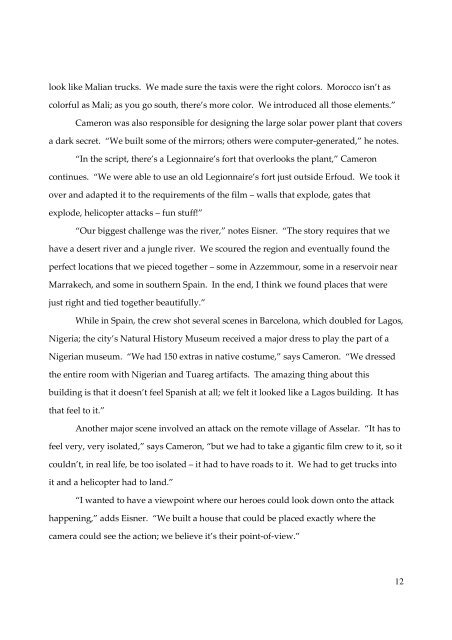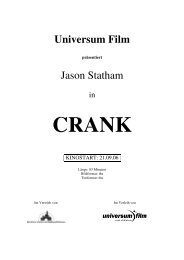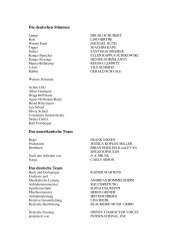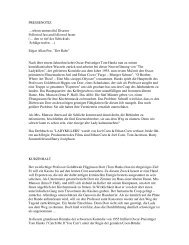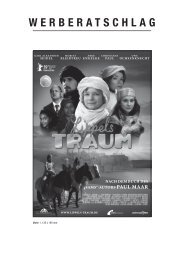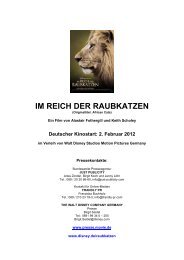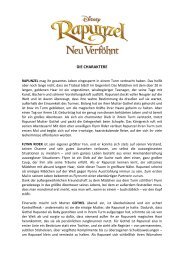SAHARA production notes FINAL
SAHARA production notes FINAL
SAHARA production notes FINAL
Create successful ePaper yourself
Turn your PDF publications into a flip-book with our unique Google optimized e-Paper software.
look like Malian trucks. We made sure the taxis were the right colors. Morocco isn’t as<br />
colorful as Mali; as you go south, there’s more color. We introduced all those elements.”<br />
Cameron was also responsible for designing the large solar power plant that covers<br />
a dark secret. “We built some of the mirrors; others were computer-generated,” he <strong>notes</strong>.<br />
“In the script, there’s a Legionnaire’s fort that overlooks the plant,” Cameron<br />
continues. “We were able to use an old Legionnaire’s fort just outside Erfoud. We took it<br />
over and adapted it to the requirements of the film – walls that explode, gates that<br />
explode, helicopter attacks – fun stuff!”<br />
“Our biggest challenge was the river,” <strong>notes</strong> Eisner. “The story requires that we<br />
have a desert river and a jungle river. We scoured the region and eventually found the<br />
perfect locations that we pieced together – some in Azzemmour, some in a reservoir near<br />
Marrakech, and some in southern Spain. In the end, I think we found places that were<br />
just right and tied together beautifully.”<br />
While in Spain, the crew shot several scenes in Barcelona, which doubled for Lagos,<br />
Nigeria; the city’s Natural History Museum received a major dress to play the part of a<br />
Nigerian museum. “We had 150 extras in native costume,” says Cameron. “We dressed<br />
the entire room with Nigerian and Tuareg artifacts. The amazing thing about this<br />
building is that it doesn’t feel Spanish at all; we felt it looked like a Lagos building. It has<br />
that feel to it.”<br />
Another major scene involved an attack on the remote village of Asselar. “It has to<br />
feel very, very isolated,” says Cameron, “but we had to take a gigantic film crew to it, so it<br />
couldn’t, in real life, be too isolated – it had to have roads to it. We had to get trucks into<br />
it and a helicopter had to land.”<br />
“I wanted to have a viewpoint where our heroes could look down onto the attack<br />
happening,” adds Eisner. “We built a house that could be placed exactly where the<br />
camera could see the action; we believe it’s their point-of-view.”<br />
12


